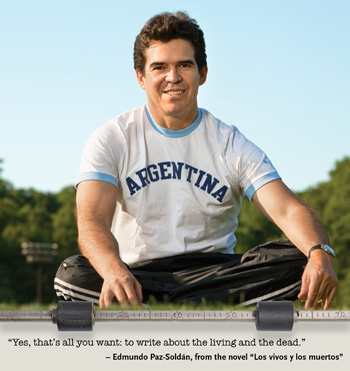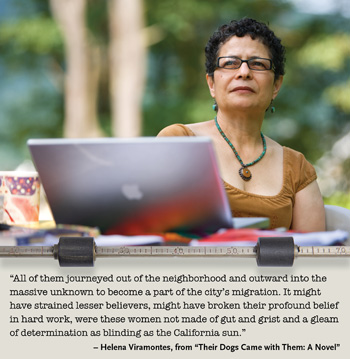COVER STORY
Why creative writing is a force on campus: Maintaining a balance between 'the mind and the heart' through storytelling
(Page 6 of 7)
This semester, Billie Jean Isbell, professor emerita of anthropology, is teaching her novel "Finding Cholita" in an introductory anthropology course. The novel is a fictionalized account of her long-term research in Peru, which began in 1967 and was altered by the outbreak of war in the 1980s between Maoist Shining Path guerrillas and the Peruvian government. Isbell interviewed people who were displaced, tortured and raped.
"Novels are more readable than most ethnographies," Isbell says, "and I wanted to protect the identities of people who told me stories about the war, disappearances and massacres."
As a child in Bolivia, Edmundo Paz-Soldán took inspiration for his first short stories from Agatha Christie. He began writing seriously in his late teens, and in 1991, when Paz-Soldán was 24, his first novel was published to acclaim and won Bolivia's most important literary prize. At Cornell, Paz-Soldán, a professor in Romance studies, teaches literature and culture. His seven novels have been translated into nine languages. In South America he is a widely read political writer, blogger and public intellectual.
"Whatever your professors tell you, you should always question it," says Paz-Soldán. "The best writers -- like Kafka, Borges, Hemingway or Faulkner -- show that you can have your own ideas about style. We can give general advice. But when you find your own voice, you may find that sometimes you should ignore our advice."
Ultimately, says McClane, "Writing is a way to make sense of things. It's always an act of revelation and self-discovery. It's never boring. And if you add to the reservoir of wonder, you'll always have a readership."
Force and success
The process of writing has been a journey of self-discovery for English professor Helena Viramontes, director of the Creative Writing Program, who first shared her fiction at a Latino writers' workshop in East Los Angeles in the early 1980s. The fruits of that workshop gained her admission to the UC-Irvine creative writing program, and her first story collection, "The Moths and Other Stories," was published in 1985. Then her progress was slowed by raising two children, work and community service. Even so, nearly a decade later she earned her MFA and sold her thesis as her first novel, "Under the Feet of Jesus."

